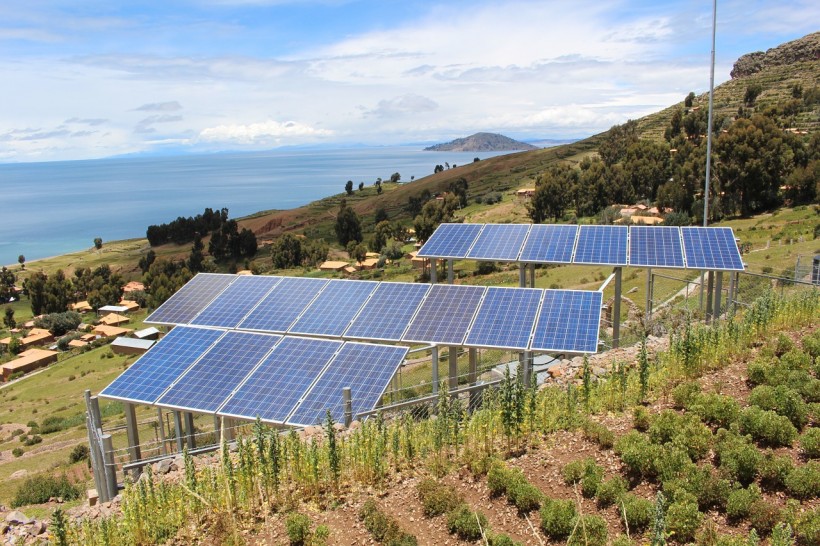Plans for constructing new solar power parks with a total combined capacity of 1.2 gigawatts to be installed in several Indian states have been announced. The country pushed forward several ambitious projects in renewable energy in the past few weeks.
The states made various announcements regarding their plans to develop floating solar plants and solar parks following India's ambition to attain a renewable energy capacity of 175 gigawatts by the year 2022.
Punjab's 600-MW Solar Park Projects
The Punjabi government is planning to construct three solar parks, each with a capacity of 200 megawatts in its Rupnagar and Mohali districts. The plans were announced by Minister and lawyer Manish Tewari, who also revealed that the district deputy commissioners were tasked to identify and allot land for these solar parks.

Plans for constructing new solar power parks with a total combined capacity of 1.2 gigawatts to be installed in several Indian states have been announced. The country pushed forward several ambitious projects in renewable energy in the past few weeks.
Tewari also said that the state government confirmed that the plans would be further acted upon once the land areas have been finalized. The PEDA or Punjab Energy Development Agency, the state's nodal agency, will outline the development plan for these solar parks in coordination with the MNRE or Union Ministry of New and Renewable Energy. The country expects that the parks' establishment will attract more investment of more than 1.3 billion US dollars.
READ: The Saskatchewan Could Be Home to a New Energy Tech Frontrunner
Maharashtra's 602-MW Solar Park Projects
Nitin Raut, Maharashtra's energy minister, announced the decision of state-owned Mahagenco or Maharashtra State Power Generation Company to construct three solar parks with a capacity of 602 megawatts in the Indian state. These parks will be built in three distinct stages under an EPC or engineering, procurement, & construction contract on Mahagenco-owned land.
The first stage is to be constructed in Kaudgaon, Latur, with solar projects having a 187-megawatt capacity to be built on thermal power station locations in Koradi, Bhusawal, Parli, Sakri, and Nashik districts. The second stage will comprise solar projects with a 390-megawatt capacity to be built in Yavatmal, Chandrapur, and Washim districts. For the third stage, 25-megawatt solar projects will be constructed in the Sakri district.
For the funds for the first two stages, a loan was given by KfW, a German agency, together with state government equity infusion. The third stage is funded by a low-interest private investment, which is separate from the equity loan by the state government.
In the state, solar parks with a capacity of 2500 megawatts are planned under an ultra-mega renewable energy park schemes. These projects are going to be realized through a JVC or joint venture company of Mahagenco and NTPC. Other companies will be allowed to develop these projects relative to their JVC shares.
READ ALSO: The US Department of Energy Invests in New National Laboratory to Advance Fuel Cell and Hydrogen R&D
Odisha's 500-MW Floating Solar Projects
An MoU or Memorandum of Understanding between state-owned NHPC hydro giant and GEDCOL or Green Energy Development Corporation of Odisha Ltd. was signed, forming a joint venture to develop floating solar energy projects in Odisha state. These projects will have a combined total power of 500 megawatts.
The two entities will plan and construct the projects in the various state reservoirs. This will be under the government's UMREPP or Ultra Mega Renewable Energy Power Parks Scheme of the MNRE.
These floating plants will need 332 million US dollars, of which the first phase will be started by March 2022. TERI or The Energy and Resource Institute states that Odisha can potentially generate total solar energy of 177.55 gigawatts in state reservoir areas totaling 877 square kilometers.
READ NEXT: Spikes in Power Costs and Pollution Linked to California's Worst Drought
© 2024 NatureWorldNews.com All rights reserved. Do not reproduce without permission.




![Great White Sharks Observed for the First Time Changing Their Behavior in Different Marine Environments [Study]](https://1471793142.rsc.cdn77.org/data/thumbs/full/70251/280/157/50/40/great-white-sharks-observed-for-the-first-time-changing-their-behavior-in-different-marine-environments-study.jpg)
